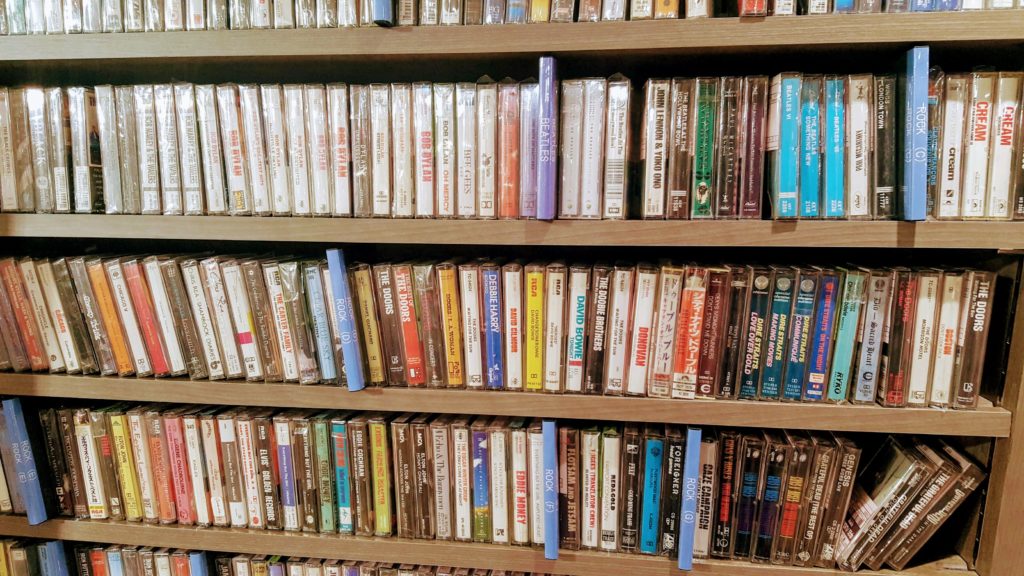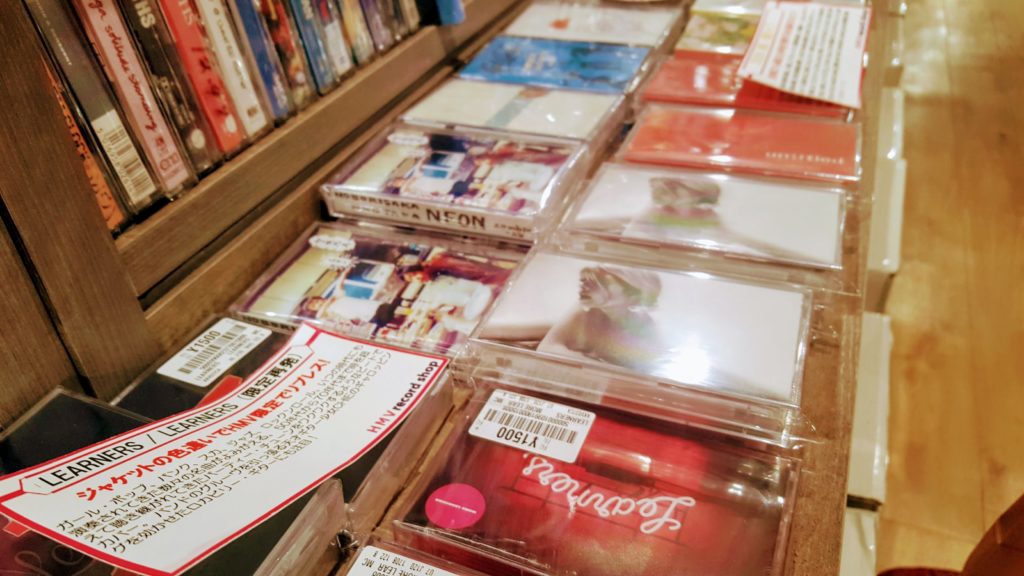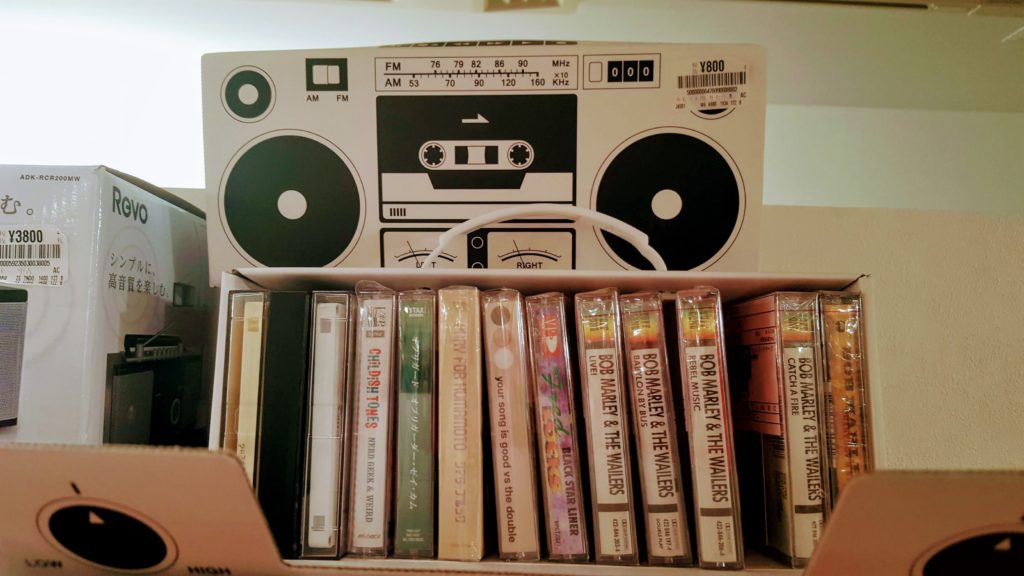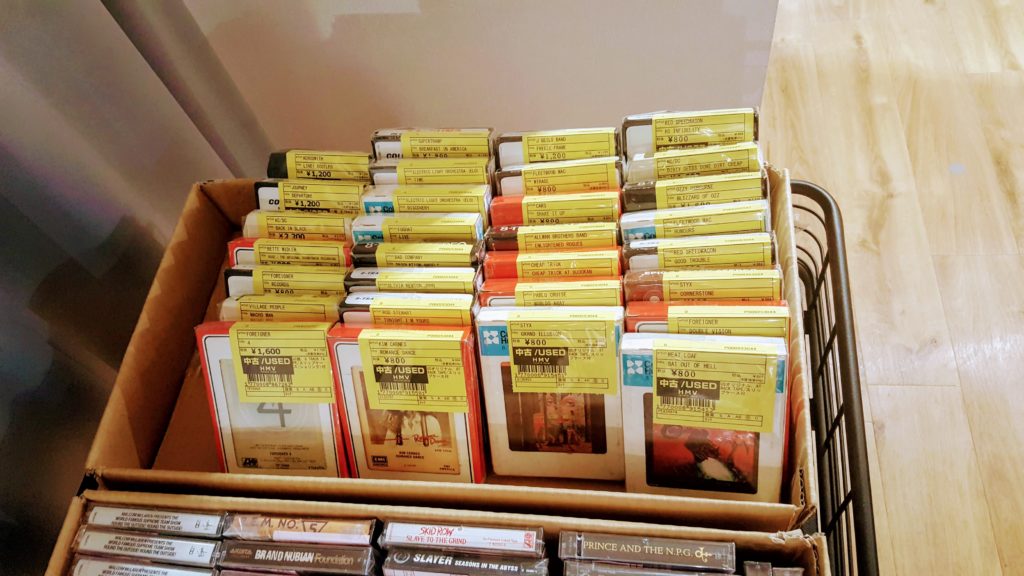Are Tapes Really “Big In Japan”?

Yesterday I was in one of my favorite record shops here in Japan, a wonderful little store in Nakano called Shop Mecano. It’s a store dedicated to new wave, synthpop and electronic music – all things that are right up my ally. His stock is pretty evenly split between CDs and LPs, although I suspect that the majority of his business is CD sales, as that inventory seems to cycle a hell of a lot more frequently than his LP supply.
One thing I never saw in his store was cassette tapes, that was, until yesterday, when I saw a sole copy of Kraftwerk’s The Mix up against the wall, ready to go to someone’s home for the low price of 2,000 yen (about $20). I told the owner that he should mark this up, as cassette tapes are big in Japan now – riding a huge comeback at the moment. With a look that I can only describe as “incredulous incredulousness” he scoffed at that suggestion outright, saying, almost with disdain that the cassette tape revival is “fake.”
I asked if he meant “fad.” But now, he was insistent on his usage of “fake.”
“No one is buying those,” he said with assurance.
The owner of that shop is a cool dude, and I don’t want to discount his years of retail experience, but I thought my own eyes proved him wrong. Whenever I go to a big record store these days, I see at least one wall dedicated to nothing but tapes. Not only that, but tapes priced at a premium, sometimes over $40. There’s even an entire store focused primarily on tapes, Waltz, located in Naka-Meguro (which also has a great, if small, vinyl section that I recommend checking out).

The media seems to be jumping on the trend, with countless videos and articles on the internet declared that tapes are big in Japan. Hell, I even did the same thing recently when I joked about the tape revival on my most recent appearance on Retronauts, saying that a tourist could make a mint by bringing tapes from America over for sale.
But that did get me to thinking, for all the talk of cassette tapes making a comeback, I’ve never actually seen anyone buy one. And the tapes on display at my local Disk Union appear to be the same tapes that were on display there six months ago. No one is buying that Queen maxi-single. Those 808 State re-issues aren’t moving. That stack of Nevermind isn’t getting any smaller. The inventory at the Shinjuku HMV does seem to cycle a bit more often, but not by much. I see the same tapes, day in and day out.
I’m sure that there are people here in Japan buying tapes, there wouldn’t be so many new releases on tape if that wasn’t the case, but perhaps the shop owner was onto something. Perhaps this is a “fake trend,” one amplified by the media to be more than it really is. If the American sales data of tapes is any indication, that would certainly be the case.

In the states, cassette tape sales skyrocketed in 2016, up some 74% from the year prior. That sounds impressive! That is, until you look at the raw numbers. Tape sales may have increased by a whopping 74%, but that translates to just 129,000 total tapes sold. Also, a sizable percentage of that can be attributed to just a few key releases. The Prince re-issues apparently moved a few thousand units, as did a special tape release by Justin Bieber of all people. And I’d be remiss not to mention the best-selling tape release of last year, Guardians of the Galaxy Awesome Mix Vol. 1, which sold 4,000 copies. It would not be an exaggeration to say that at least 10% of the 129,000 new tapes sold in America last year came from just five or six different tapes. Of course, that ignores the second-hand market, but unless things have changed since my last visit to American record stores last August, not many stores are carrying second-hand tapes in bulk.
So, American tape sales can’t even top 130,000 units moved, I can’t imagine that many moving here in Japan, a much smaller country with a much smaller population. Sure, sales of cassette tapes might be up 1,000% here, but that means they’re selling 10,000 tapes a year, up from the 100 the year prior.
I’m beginning to suspect that the guy from Mecano may be right. This tape trend might be a manufactured one. The vinyl resurgence was an organic one. It started with the consumers, then to the shops and then finally to the record labels, who saw a demand and then acted on it. With tapes, it might be the other way around, a planned marketing movement, a calculated attempt to create a “scene.”
And if tapes aren’t a faux scene engineered by retail to make a quick buck, then this definitely is.

Don’t try to make 8-tracks a thing, HMV, that’s just sad.
Leave a Reply